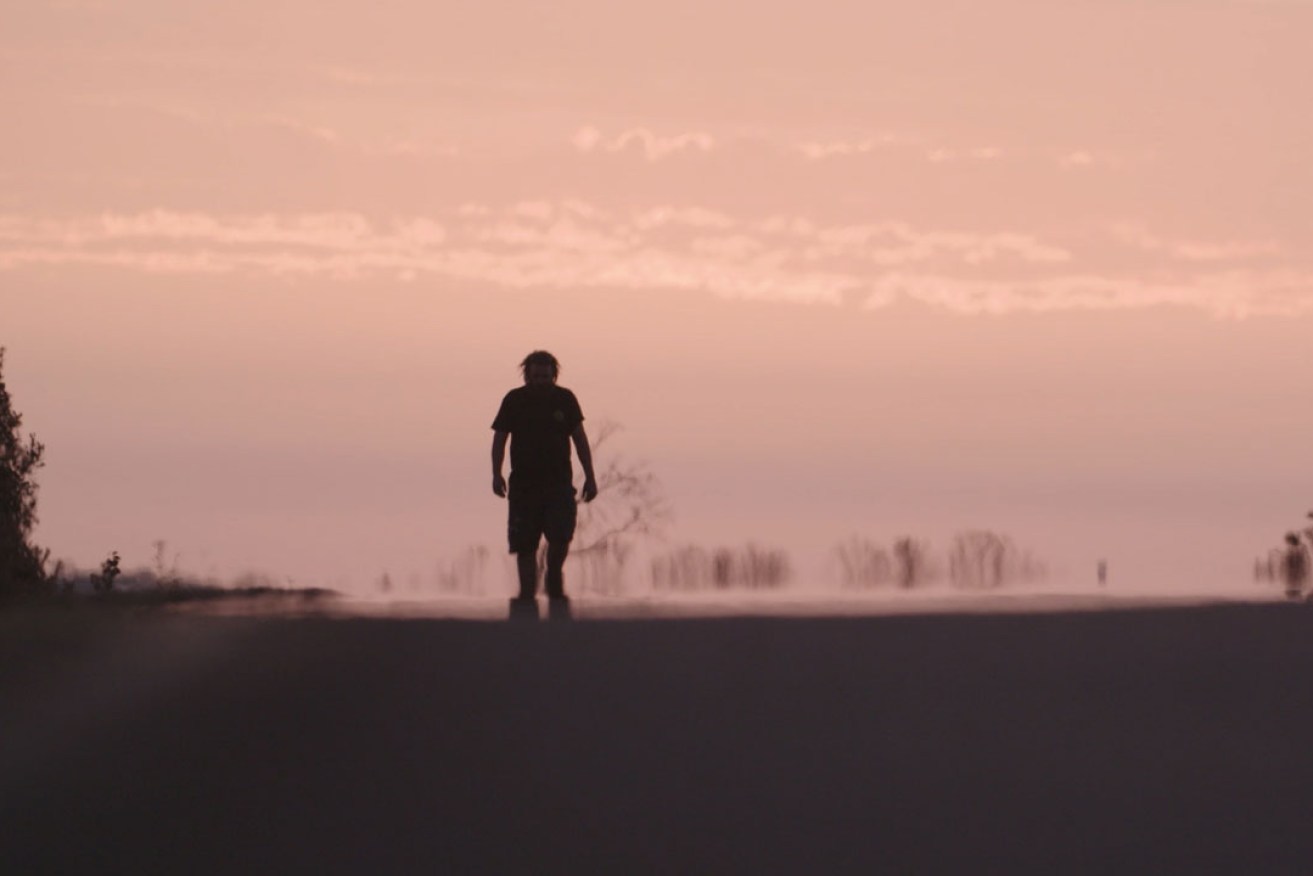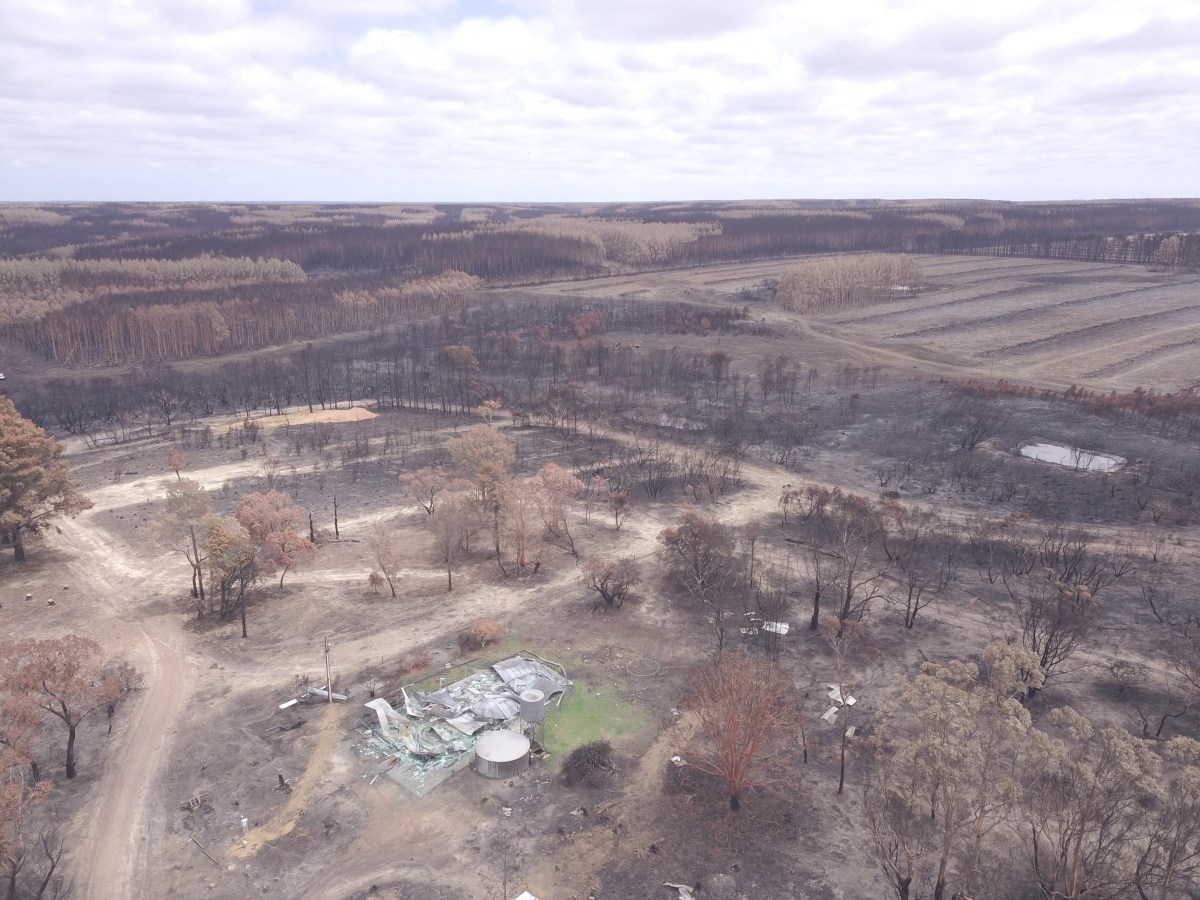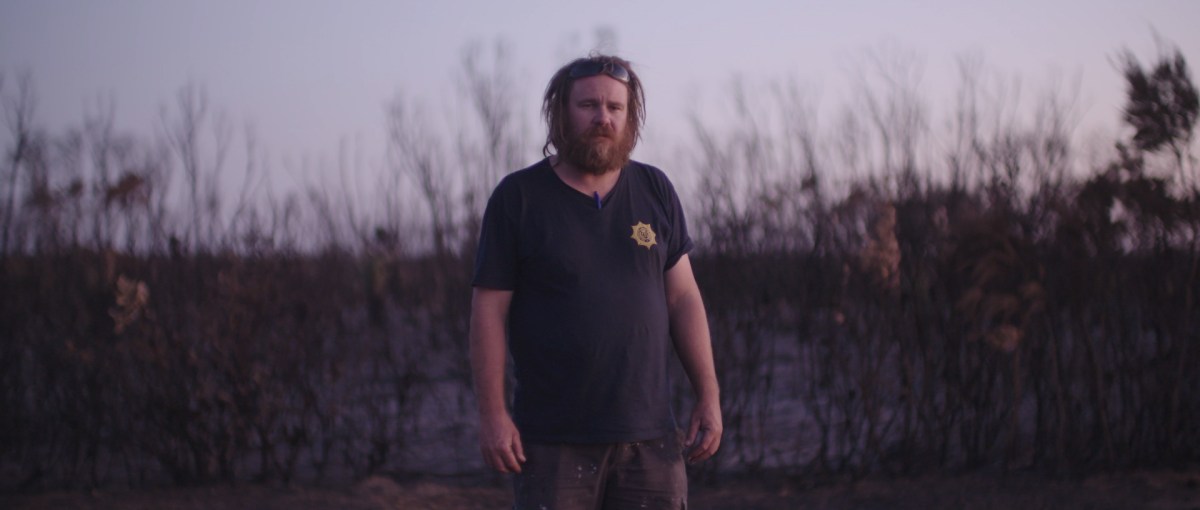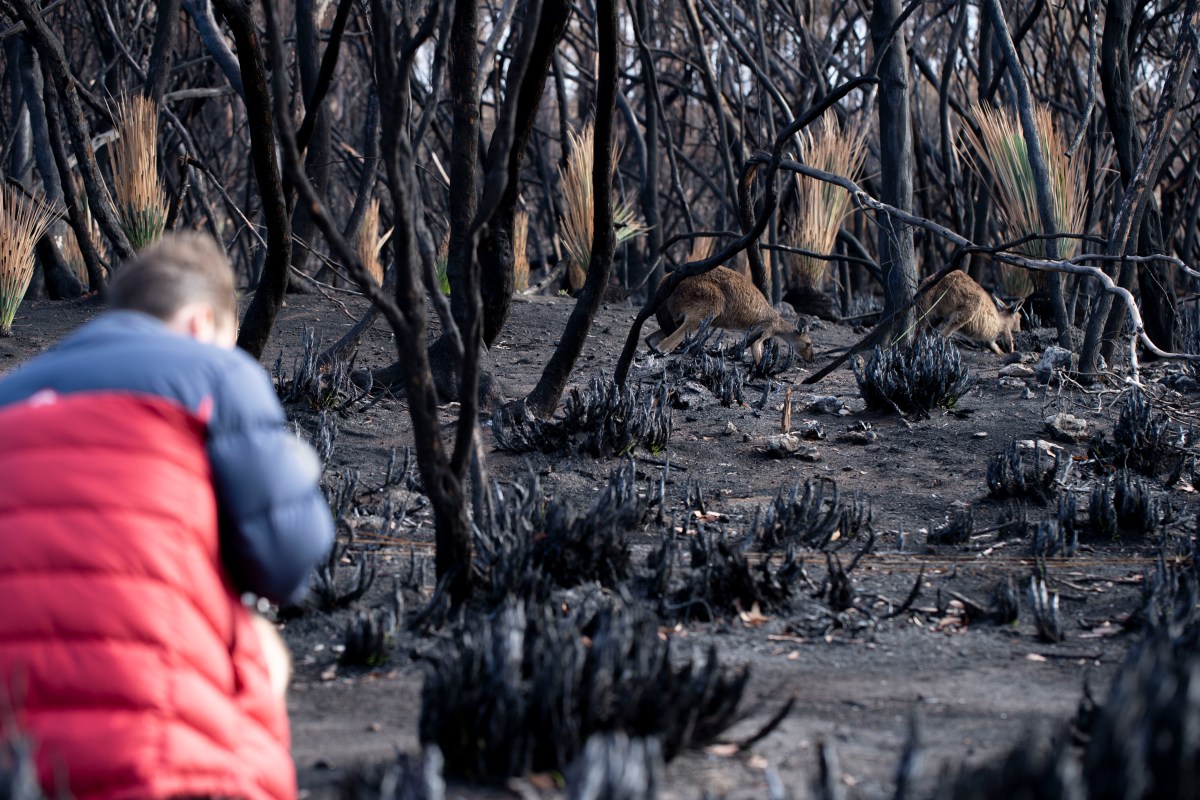Of Fire and Fallout: documenting KI’s devastation and resilience
Filmmaker Stephen de Villiers and his crew will share the stories of Kangaroo Island residents in an emotional documentary charting the devastation caused by the bushfires that raged across the island, as well as the ongoing process of recovery.


A still from the documentary, Of Fire and Fallout.
When Adelaide-based de Villiers first spoke to InDaily several weeks ago, he had just returned from five days filming on Kangaroo Island. Since then, the news cycle has moved on quickly from Australia’s summer bushfires to become dominated by the COVID-19 pandemic, but he still believes his documentary project, Kangaroo Island: Of Fire and Fallout, is important.
Perhaps it’s become even more vital.
“I believe the island will recover and I believe the community will pull through, but I think we’re about to see the worst,” he says of the impact of the fires.
“When winter sinks in and people are still homeless, living in tents and living in caravans, it’s going to get very challenging.”
Produced by Adelaide production company Beyond Content with cinematography from South Australian-based Benjamin Dowe, Kangaroo Island: Of Fire and Fallout documents how those on the island are dealing with the economic, environmental and social challenges caused by the December-January fires.
The fires claimed two lives and 89 homes.
More than 210,000 hectares were burnt, with the worst-hit areas including the Flinders Chase National Park, where 95 per cent of the park was destroyed and 30,000 koalas perished. Agricultural areas on the western side were also affected, with 53,000 livestock lost and 95 per cent of trees in timber plantations torched.

Devastation on Kangaroo Island. Photo: supplied
“You’ve got people who lost all their livestock but the house survived, and then you’ve got people who lost their house but … a lot of the flock survived, and then you’ve got people who lost both,” South African-born de Villiers says.
“They were some of the most heartbreaking, because you’ve got people who’ve lost their house and lost most of their livestock, and they’re probably the hardest hit.”
The film, which he describes as an “emotional rollercoaster”, focuses mainly on four residents.
The fires are only one part of the story
De Villiers says Kangaroo Island: Of Fire and Fallout is sometimes shocking and sometimes humorous, but isn’t designed to be a “piece of advertising” to draw people to the island. Instead, it will be presented as “a lyrical, intimate cinematic journey”.
After the bushfires, the South Australian Tourism Commission launched the campaign #BookThemOut to encourage people to visit Kangaroo Island, but the COVID-19 crisis has since seen bookings cancelled well into June.
Before guidelines and rules were introduced to stop the spread of the virus, De Villiers and his team were planning to return to the island in the coming months to check in with the people whose stories they are telling to see how they’re going with their “rebuild and recovery journey”.
He has already gained an insight into what he describes as the strength and the pain of the island’s community.
“I am trying to tell a more human interest story and peel back the curtains so that viewers realise what’s going on, what lies ahead of them and the challenges that the communities all face, but at the same time demonstrate and reflect the resilience, the strength of the communities.”
One story that has stayed with the director is that of a farmer who lost his home in the fires. Because the homeowner was remortgaging his property through the bank, he didn’t qualify for one of the Federal Government grants available for fire victims.
“You worry about some people’s mental health because they’ve lost everything, which is shocking enough,” de Villiers says.
“But to then be kind of a victim of bureaucracy adds insult to injury and salt in the wounds. It’s like, ‘How do I recover?’.”

One of the Kangaroo Island locals who may share their story in the documentary.
Some farmers told him they had lost up to three decades of work when their flocks perished. Time, de Villiers says, is something they don’t all have.
“Many of the older generation, so the farmers who have been farming for 40 to 50 years, they sense they don’t have the time on their hands or on their side to get back to where they were.
“The younger generation… they are pretty determined, and you sense that and you believe that [they will rebuild]; you want to believe that.”
The documentary team is aiming to finish the film at the end of the year, and De Villiers hopes to be able to present a free screening for Kangaroo Island residents at the Parndana Oval, which served as a community meeting and evacuation point during the bushfires.
He will also try to sell it to a streaming service such as Netflix or Amazon.
“The fires are only one part of the story. The rebuilding in the recovery of the island is kind of the real story to me,” he says.
“But even as we were leaving a couple of weeks ago, in our first block of filming, the green shoots were starting to sprout out of the blackened trees.
“And on the last day of our filming, we finally saw a kangaroo and her joey, way out west where it’s been completely devastated and pretty much all of the wildlife was destroyed, but it was another symbolic kind of beautiful metaphor, to see a kangaroo hopping through these charred, blackened, devastated landscapes.
“Those kinds of symbols give you hope and they give you a sense that there will be a happy ending.”

Signs of life amid the devastation. Photo: supplied




